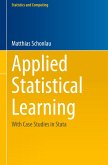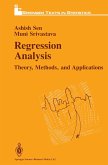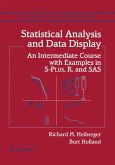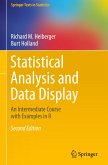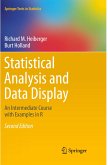This textbook considers statistical learning applications when interest centers on the conditional distribution of the response variable, given a set of predictors, and when it is important to characterize how the predictors are related to the response.
This fully revised new edition includes important developments over the past 8 years. Consistent with modern data analytics, it emphasizes that a proper statistical learning data analysis derives from sound data collection, intelligent data management, appropriate statistical procedures, and an accessible interpretation of results. As in the first edition, a unifying theme is supervised learning that can be treated as a form of regression analysis. Key concepts and procedures are illustrated with real applications, especially those with practical implications.
The material is written for upper undergraduate level and graduate students in the social and life sciences and for researchers who want to apply statistical learning procedures to scientific and policy problems. The author uses this book in a course on modern regression for the social, behavioral, and biological sciences. All of the analyses included are done in R with code routinely provided.
This fully revised new edition includes important developments over the past 8 years. Consistent with modern data analytics, it emphasizes that a proper statistical learning data analysis derives from sound data collection, intelligent data management, appropriate statistical procedures, and an accessible interpretation of results. As in the first edition, a unifying theme is supervised learning that can be treated as a form of regression analysis. Key concepts and procedures are illustrated with real applications, especially those with practical implications.
The material is written for upper undergraduate level and graduate students in the social and life sciences and for researchers who want to apply statistical learning procedures to scientific and policy problems. The author uses this book in a course on modern regression for the social, behavioral, and biological sciences. All of the analyses included are done in R with code routinely provided.
"This book is an outstanding example of synthesizing theoretical knowledge with applications, mathematical notations with R code, and statistics with machine learning. It has relevant exercise sets and will be an excellent textbook for a broad range of quantitatively oriented students, specifically, for those specializing in data science or taking a course on statistical learning." (Vyacheslav Lyubchich, Technometrics, Vol. 59 (4), November, 2017)
"The book focuses on supervised learning techniques that can be viewed as a form of regression ... . There are instructive problems at the end ... and examples with code in R to illustrate throughout. ... This is a thought provoking book worthy of serious attention by machine learning practitioners." (Peter Rabinovitch, MAA Reviews, July, 2017)
"The intended audience includes advanced undergraduate and graduate students biostatistics in the fields of social science and life science, as well as researchers who want to apply statistical learning procedures to scientific and policy problems. ... This is an excellent overview of statistical learning applications. It is strongly recommended to advanced researchers and statisticians particularly interested in the social and behavioral aspects of data analysis." (Puja Sitwala, Doody's Book Reviews, January, 2017)
"The book focuses on supervised learning techniques that can be viewed as a form of regression ... . There are instructive problems at the end ... and examples with code in R to illustrate throughout. ... This is a thought provoking book worthy of serious attention by machine learning practitioners." (Peter Rabinovitch, MAA Reviews, July, 2017)
"The intended audience includes advanced undergraduate and graduate students biostatistics in the fields of social science and life science, as well as researchers who want to apply statistical learning procedures to scientific and policy problems. ... This is an excellent overview of statistical learning applications. It is strongly recommended to advanced researchers and statisticians particularly interested in the social and behavioral aspects of data analysis." (Puja Sitwala, Doody's Book Reviews, January, 2017)
"It could readily be a textbook for an applications-focused course at the graduate level as each chapter comes with exercises ... . Examples with accompanying code also appear throughout the chapters which provide a scaffold for getting started ... . Berk's pragmatic advice will serve a wide audience from practitioners to educators to students." (Sara Stoudt, MAA Reviews, December 12, 2021)




